Regulatory
The National Cotton Council (NCC) worked with Congress to ensure that executive agencies’ regulatory processes 1) were transparent and 2) included stakeholder input when developing rules and regulations. That included monitoring the status of the House-passed Regulatory Integrity Act (H.R. 5226) which would direct each executive agency to make publicly available a list of pending agency regulatory actions, the date the agency began to develop and consider an action, its status, an estimate of the date it will be finalized, a brief description of the action, and each public communication about the action issued by the agency.
Specifically, the NCC, along with other agricultural organizations, sent a letter to House Agriculture Committee Chairman Michael Conaway (R-TX) and Ranking Member Collin Peterson (D-MN) highlighting concerns with EPA’s general conduct. Specifically noted was the outdated rulemaking process itself and policies being pursued by the agency where process infringements had affected U.S. agriculture.
A letter to Conaway and Peterson from the NCC and other commodity and agricultural groups conveyed agriculture's concerns with EPA's new Worker Protection Standards (WPS) that were set to go in effect on January 2, 2017. The letter highlighted the fact that during the new rule's development, the agency failed to identify the benefits of its revisions. Specifically, the letter pointed out two provisions on which stakeholders never had a chance to comment: 1) one authorizing a "designated representative" access to a farm's pesticide use information (the provision of most concern to grower organizations) and 2) one setting out "application exclusion zones." Later, NCC staff, along with the American Farm Bureau Federation, USA Rice and others, met with EPA staff regarding the “designated representative” section in the finalized WPS rulemaking emphasizing to the agency how that section of the rule would open a host of concerns involving privacy and confidential business records.
The Occupational Safety & Health Administration (OSHA) issued a final rule to revise its Recording and Reporting Occupational Injuries and Illnesses regulation. The rule covered employers with 20 or more employees (including fulltime workers and seasonal/temporary workers) – among them farms, gins, warehouses, oilseed processing firms, yarn manufacturers and raw cotton merchants.
The NCC’s work with Congress and the Administration on the prevention of over-reaching regulations included submitting a statement of record to a House Agriculture Committee’s Subcommittee on Biotechnology, Horticulture and Research hearing about factors affecting producers’ production costs. The statement conveyed such concerns as EPA’s approval process of crop protection products as well as the registration and re-registration process for pesticides; EPA’s pesticide applicator certification rule, updated Worker Protection Standards, the additional permits required under the new Clean Water rule through the National Pollutant Discharge System; and the Food & Drug Administration’s (FDA) Food Safety Modernization Act Preventive Controls for Animal Food Rule. The NCC and the National Cotton Ginners’ Association had met earlier with the FDA to address industry concerns with that animal feed rule and its impact on gins and cottonseed storage, specifically that some gins would not be considered farm-owned.
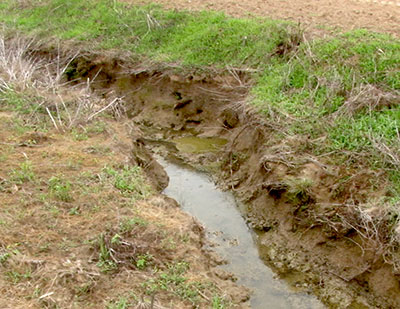
Earlier, the NCC had joined other members of the Waters Advocacy Coalition on comments to the Army Corps of Engineers’ proposal to Reissue and Modify Nationwide Permits – as the scope of federal jurisdiction and its effect on the efficient administration of the Nationwide Permit Program is of critical importance. The NCC also submitted comments to EPA opposing most of that agency’s proposed changes for Certification of Pesticide Applicators noting these changes would add a tremendous burden on state budgets because the state regulatory agencies are tasked with the training and enforcement.
In the 6th Circuit Court of Appeals case challenging the Waters of the U.S. (WOTUS) rule, also called the Clean Water Rule, the court ruled against the states, agricultural sectors and companies by denying their argument to consider Army Corps of Engineers memos that raised concerns about the rule and how EPA was acting in the rulemaking process. The challengers argued that these communications revealed that EPA’s drafting process was based on politics and not environmentally sound science. Later in the year, the House Oversight and Government Reform Committee released a staff report from a two-year investigation of the WOTUS rulemaking process revealing how White House and EPA pressure led to a rulemaking that was rife with legal shortcuts, predetermined conclusions and politically motivated timelines.
The Pesticide Policy Coalition (PPC), of which the NCC is a member, submitted comments in a letter to EPA on the proposed reissuance of its five-year National Pollution Discharge Elimination System (NPDES) Pesticide General Permit (PGP). The PGP would authorize certain point source discharges from the application of pesticides to, over, or near jurisdiction waters under the Clean Water Act. The NCC and other PPC members continued to engage with EPA staff and urged them to 1) address concerns the PPC had with some of the proposal’s elements and 2) consider PPC recommendations regarding those concerns as it finalized the 2016 PGP. Later, the NCC joined with other agricultural community members on comments to EPA’s Office of Wastewater Management on the agency’s proposed revisions to the NPDES regulations that were published in May. Those proposed revisions aimed to eliminate regulatory and application form inconsistencies; improve permit documentation, transparency and oversight; clarify existing regulations; and remove outdated provisions. In addition, the NCC and others continued urging EPA to work with states when developing provisions and for the agency to maintain its longstanding view that the need for regulatory certainty and finality in decision-making outweighs any claimed interest.
The House passed the Zika Vector Control Act (H.R. 897), which was received in the Senate and was awaiting action. The measure would prevent EPA from requiring NPDES permits for any pesticides that already are authorized for sale, distribution or use under the Federal Insecticide, Fungicide, and Rodenticide Act (FIFRA). The NCC, along with other agricultural groups, supported the measure believing pesticides did not need to be regulated under two separate sets of rules.
The NCC submitted separate sets of comments to EPA on their two proposals: “Guidance for Herbicide Resistance Management, Labeling, Education, Training, and Stewardship” and “Guidance for Pesticide Registrants on Pesticide Resistance Management Labeling.” The comments’ underlying premise was that the industry does not agree with EPA's assessment that resistance, which is an evolutionary process, constitutes an "unreasonable adverse effect on the environment" as intended under FIFRA, thus giving EPA authority to regulate “resistance” through labels and other means.
The NCC joined a diverse group of more than 200 organizations on a letter of support for the “Ozone Standards Implementation Act of 2016” (H.R. 4775), a bill introduced by Representative Pete Olson (R-TX). That legislation would provide a common-sense approach for implementing national ambient air quality standards, recognize ongoing state efforts to improve air quality through a reasonable implementation schedule for the 2015 ozone standards, streamline the air permitting process for businesses to expand operations and create jobs, and include other reforms that bring more regulatory certainty to federal air quality standards.
The NCC remained active in a coalition represented by the American Home Furnishings Alliance (AHFA). The AHFA commented on the 1) National Fire Protection Association’s development of a new standard for evaluating fire and ignition resistance of upholstered furniture and 2) the California Department of Toxic Substances Control's methodology to screen for flame retardant chemicals in upholstered furniture in accordance with the requirements contained in California S.B. 1019.
In other regulatory matters, the NCC:
- was represented by Allen McLaurin, a North Carolina cotton producer, on the Pesticide Policy Dialogue Committee (PPDC), a broadly representative federal advisory committee that considers a variety of issues related to pesticide regulatory development and reform initiatives, public policy, and program implementation. In the second of its two 2016 meetings, the PPDC discussed the upcoming 2017 deadlines for implementation of the revised Pesticide Applicator Certifications and the Worker Protection Standards.
- participated on USDA's Agricultural Air Quality Task Force which was renewed for 2016-18 and included Bill Norman, the NCC's vice president, Technical Services, and Kelley Green, Texas Cotton Ginners' Association. That panel is comprised of representatives from industry, agriculture, academia, government agencies, non-governmental organizations and other agricultural and environmental experts.
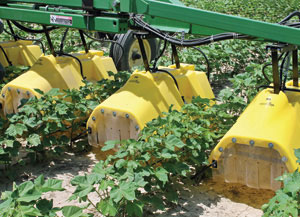
Product Preservation
Throughout 2016, the NCC continued to work with others in the agricultural community to ensure EPA relied on credible scientific data and required all studies be subject to the same requirements as those required of product registrants.
The NCC submitted comments on EPA's draft human health and ecological risk assessments for the registration review of a group of 35 different pesticides reported by EPA as sulfonylureas and other identified chemicals. Among the other identified chemicals were several organophosphate (OP) pesticides. More specifically, the NCC submitted comments on three OP chemicals, which are significant to the cotton industry: dimethoate, dicrotophos and tribufos (the key ingredient in the defoliant DEF). The NCC urged the EPA to recognize these products’ benefits which include providing producers with effective insect resistance management options and/or options for effective activity under unique environmental conditions. Late in the year, information from NCC-surveyed gins on how seed cotton is delivered to them by their customers, was delivered to EPA to help the agency in its risk assessment of tribufos. The information was aimed at dispelling EPA's impression that a large number of farm workers still are used to pack loose seed cotton in trailers.
An industry coalition consisting of the NCC, CropLife America, the American Seed Trade Association, the Ag Retailers Association, the American Soybean Association, the National Association of Wheat Growers and the National Corn Growers Association asked a federal court to allow them to join the lawsuit Anderson v. EPA. The suit, brought by a number of plaintiffs, including environmental activists, requested a court order requiring EPA to regulate seeds treated with neonicotinoids as pesticides under FIFRA – the U.S. statute that provides EPA authority to regulate pesticides. The coalition sought to join the lawsuit to defend EPA's current regulation of neonicotinoid seed treatments and to ensure that the court and EPA understand the vital importance of treated seeds to American agriculture. Late in the year, the court ruled in favor of EPA and the industry intervenors and against the plaintiffs on each of the plaintiffs’ claims.
Throughout 2016, the NCC conveyed to EPA the importance of having access to a diverse arsenal of crop protection products with different modes of action to combat currently resistant weeds and pests and to prevent or delay new resistance development. That included another effort to ensure neonicotinoid availability in which the NCC submitted comments to EPA's draft "Pollinator Ecological Risk Assessment: Imidacloprid Registration Review." The NCC highlighted a number of concerns with the risk assessment and urged EPA to include producers in the finalization of any risk/benefit process, which they had failed to do in the past. The comments also reiterated the importance of neonicotinoid chemistry in the control of pests and explained that the loss of additional chemistries will decrease rotation of modes of action and encourage development of pest resistance.
The NCC submitted detailed comments conveying the NCC’s full support for the registration of Monsanto’s dicamba formulations for use on USDA deregulated dicamba-tolerant cotton, while underscoring the importance of effective weed management needed for successful cotton production. The NCC had encouraged producers to send in individual comments in support of this technology as well, and continued to work with others in the agricultural community to educate policymakers on the product’s benefits and the need for new technologies to help producers combat herbicide-resistant weeds. Late in the year, EPA announced they would register a dicamba formulation, Xtendimax™ with Vapor Grip™ Technology, which is specifically designed to: 1) have lower volatility, 2) control weeds in cotton and soybean crops genetically engineered to tolerate dicamba, and 3) address glyphosate herbicide resistance.
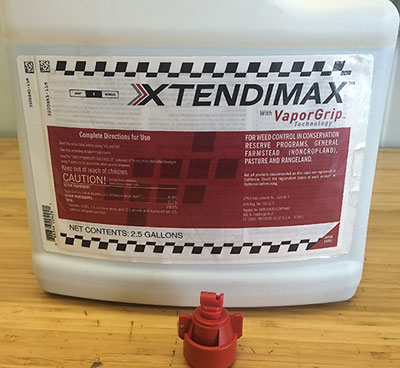
Regarding chlorpyrifos, the NCC: 1) joined 42 other agricultural organizations on a letter to EPA Administrator Gina McCarthy requesting a postponement of the agency's Scientific Advisory Panel (SAP) meeting, scheduled for April, to review human study data on the crop protection product’s potential risks; 2) joined 38 other agricultural organizations on a letter to Michael Goodis, acting director of the Pesticide Re-Evaluation Division for EPA’s Office of Pesticides Programs, requesting an additional 120 days to provide input on the draft biological evaluations of chlorpyrifos, daizinon and malathion; 3) joined with 16 other commodity and crop protection organizations in filing with the Ninth Circuit Court of Appeals an amici brief in support of chlorpyrifos that included a declaration regarding its need by Cannon Michael, a California cotton producer; and 4) submitted separate comments on chlorpyrifos, malathion and fluometuron (cotoran) – which were under EPA review. Later, the SAP submitted a report to EPA highlighting its concerns with the agency’s approach to determining safe levels of exposure to chlorpyrifos. Soon after, the 9th Circuit Court of Appeals determined that it would give EPA an additional three months to decide whether to allow chlorpyrifos’ continued use. EPA then released a Notice of Data Availability (NODA) to open a public comment period on the data that EPA plans to use to support a proposal to revoke all tolerances for chlorpyrifos. The 60-day comment period closed on January 17, 2017, and, according to the Agency, would be the last comment period for this product.
In comments to EPA reiterating strong support for the re-registration of glyphosate, the NCC stated that cotton tolerant to herbicides such as glyphosate has “revolutionized” cotton production. Representative Lamar Smith (R-TX), chairman of the House Committee on Science, Space and Technology, sent a letter to EPA Administrator Gina McCarthy asking why she delayed the SAP cancer assessment review of glyphosate that was supposed to occur in early October but was rescheduled for December 2016. EPA was expected to make a final decision regarding the product sometime in early 2017, and at that point, hopefully issue a re-registration.
EPA did issue a new registration for sulfoxaflor that did not include a label for cotton and sorghum. Prior to that action, the NCC had provided supporting comments to the EPA docket regarding the agency’s public notice that the Tennessee Department of Agriculture, Arkansas State Plant Board and Mississippi Department of Agriculture requested emergency exemptions to use sulfoxaflor (Transform®, Dow AgroSciences) for control of tarnished plant bugs in cotton. Shortly after, Senators Thad Cochran (R-MS), James Inhofe (OK) and Roger Wicker (R-MS) sent a letter to EPA Administrator Gina McCarthy asking the agency to move swiftly on making a determination for these emergency use requests. EPA then provided authorization to six states for the emergency use of Transform® on cotton during the 2016 season. The NCC also submitted comments in response to EPA’s proposal for a full registration that would eliminate use on most agricultural crop acreage, including cotton. The NCC urged the agency to reconsider the proposed decision that would have removed cotton and other crops from the Section 3 label. The NCC’s comments highlighted the importance of having multiple modes of action to protect cotton from plant pests, such as Lygus, which was the second most damaging insect pest to cotton in 2015.
The NCC submitted comments to EPA on the agency’s draft human health and ecological risk assessment for aldicarb and urged EPA to refine the risk assessment to reflect the product’s appropriate biological information. The NCC also urged EPA to recognize the benefits and importance of aldicarb as a pre-plant protectant for cotton and noted that it believes past history clearly highlights the product’s safety relative to human health and the environment.
In comments to EPA on its proposed interim decision for registration of thidiazuron, the NCC urged the agency to ensure the risk assessment reflects real world scenarios rather than overstating the presence of pollinators in a precautionary manner. The comments emphasized the importance to cotton production of having thidiazuron available as part of a harvest aid program.
The NCC joined cotton interest associations and boll weevil eradication foundations in filing comments on EPA’s “Draft Malathion Human Health Assessment.” The comments detailed the importance of malathion to continue a successful boll weevil eradication effort. The comments also asked the agency to extend the comment period an additional 60 days so the NCC could develop more in-depth comments – which the NCC did just before year’s end.
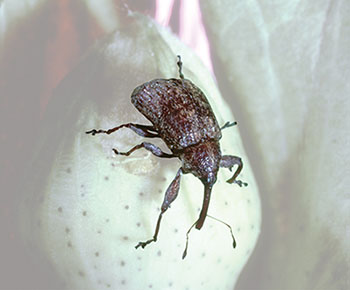
Late in the year, the NCC commended EPA for confirming its original decision to register Dow AgroScience’s herbicide Enlist Duo, after determining the product did not show any increased toxicity. EPA also proposed to add genetically engineered (GE) cotton to the label along with GE corn and soybeans as well as increase the number of states where Enlist Duo can be used from 15 to 34. The expanded list included all Cotton Belt states except California. The NCC developed comments to submit and provided those comments to cotton interest organizations for their use in commenting to EPA.
In comments submitted to the U.S. Fish and Wildlife Service (Service) on the proposed endangered listing of the Rusty Patch Bumble Bee, the NCC conveyed its disagreement with the science that the Service used and stated that the Service needed sound scientific evidence before moving forward with such a far-reaching listing.
Biotechnology
The NCC joined other agricultural organizations on a letter to USDA’s Animal and Plant Health Inspection Service (APHIS) requesting a 60-day extension on the comment period for APHIS' Notice of Intent to prepare an environmental impact statement in connection with changes to the agency's biotechnology regulations. Later, the NCC submitted comments urging APHIS to update the regulations in a manner that maintained the risk-based scientific approach while reflecting advanced understanding for the development and commercialization of biotechnology products. The comments urged caution on any changes in regulatory practices to avoid unnecessary disruptions in international trade. The NCC also provided comments on an APHIS proposed regulation governing the introduction (importation, interstate movement, and environmental release) of certain genetically engineered organisms.
Along with numerous other commodity, agricultural and food industry organizations, the NCC joined onto a letter to Senate Agriculture, Nutrition, and Forestry Committee Chairman Pat Roberts (R-KS) thanking him for his leadership on developing a uniform solution to biotechnology labeling. The letter highlighted the importance of biotechnology in agriculture, which has led to increased yields, decreased use of pesticides and lower food costs. The coalition also raised Congress’ awareness regarding the safety of genetically modified organisms and highlighted the problems that state-by-state labeling would cause as it relates to interstate commerce. In addition, the coalition 1) filed comments on The Biotech Labeling Solutions Act (S. 2609) introduced by Roberts as a companion bill to the Safe and Accurate Food Labeling Act (H.R. 1599) that passed the House in 2015 and 2) sent a letter expressing support for his bill. Legislation eventually was signed into law by President Obama – putting in place a national uniform labeling requirement.
Working with other agriculture organizations in the Biogenic CO2 Coalition, the NCC was a co-signer of a letter urging Congressional Members to contact EPA and express their support for American agriculture as a provider of 21st century solutions in the form of bioenergy, biofuels and bio products. The letter noted that EPA has failed to acknowledge that agricultural feedstocks are carbon neutral and can uptake carbon from the atmosphere during the growth cycle. Later, the coalition helped coordinate a letter from seven Senators to EPA Administrator Gina McCarthy asking to discuss the issue and how EPA would determine the level of biogenic carbon dioxide emissions from the processing of agricultural feedstocks for food, fiber and fuel.
In response to the White House questions on its “Clarifying Current Roles and Responsibilities Described in the Coordinated Framework for the Regulation of Biotechnology” document, the NCC: 1) encouraged USDA APHIS to maintain its leadership role in biotechnology review and approvals, 2) relayed concerns with how EPA would handle their part of the coordinated framework involving biotech pesticides when it has begun to use new, unverified and non-transparent methods of approving standard pesticides, 3) asked for clarification on the timelines for the agency reviews within the framework, citing concerns that one agency could hold up the entire process, and 4) suggested that the required annual report could be enhanced by reviewing case-by-case successes and failures.
On other biotechnology issues, the NCC:
joined with other agricultural organizations on a letter to the chairmen and ranking members of both the House and Senate appropriations committees expressing support for the $3 million included in the proposed FY17 USDA-Food & Drug Administration appropriations bill. The funding was designated to promote the understanding and acceptance of agricultural biotechnology.
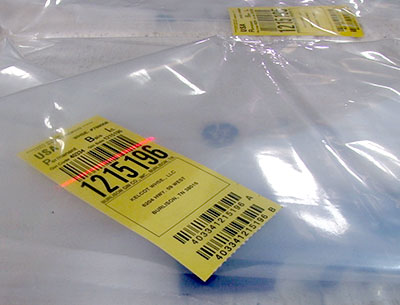
Cotton Flow/Packaging
USDA notified the NCC that the revised Joint Cotton Industry Bale Packaging Committee (JCIBPC) Specifications for Cotton Bale Packaging Materials for packaging 2016-crop cotton were approved for Commodity Credit Corporation loan program purposes.
The Specifications, which were posted on the NCC's website at www.cotton.org/tech/bale/specs/, contained the following revisions to the previous year’s JCIBPC Specifications: 1) the removal of burlap from the list of approved bale packaging materials, 2) a revised tare weight from 2 lbs. to 3 lbs. for woven (strapless/wireless) PET plastic bagging and 3) a new table “Bag and Tie Codes” under section 3. Although the new bale bag/tie codes now are included in the Specifications, and their use is voluntary, the NCC urged their placement on warehouse receipts.
The test program review section of the JCIBPC Specifications provided information about: 1) two companies' lightweight cotton bale bag test programs, 2) the continued testing of a new category of woven PET bags along with that bag's automated bag stuffing system and 3) a PET strap compatibility test program.
In other flow activity, the NCC:
- reiterated the critical importance of ginners’ diligence to match the permanent bale identification (PBI) tag number on a bale with the PBI number placed in the classing office sample for that bale.
- urged warehousers to use web-based scheduling calendars and warehousers/merchants to increase their use of EWR, Inc.’s Shipping Order Update function also known as Batch 23 files.
- reminded warehousers of their obligation to submit to USDA weekly reports for bales made available for shipment – reports required even if a warehouse has no activity during a reporting week.
Research/Education
The International Textile Manufacturers Federation ((ITMF) asked the NCC to assist in making sure U.S. spinners knew that their questionnaire on cotton contamination and foreign matter should be completed and returned by May 25, 2016. Late in the year, the ITMF-released “Cotton Contamination Survey 2005-2016” revealed that very clean raw cottons were produced in the United States and that U.S. growths were perceived to be less contaminated in 2016 than in 2013.
Prior to the 2016 harvest season, the NCC had urged U.S. cotton industry members to increase their focus on the prevention of contamination in seed cotton and lint. To assist in this NCC “Keep it Clean” outreach, the NCC 1) created a dedicated page on its website that contains links to various contamination prevention resources, 2) included the topic of contamination prevention at all gin schools, and 3) encouraged ginners and other industry members to take photos of plastics and other contaminants in fields and seed cotton and then email the images to keepitclean@cotton.org.
The NCC, which has a policy of having industry members utilize module averaging on a voluntary basis, encouraged producers to contact their gin or local classing office for more information. Among other NCC efforts was the posting on its website of a USDA-developed brochure that explains the module averaging program’s major benefits and a request that USDA update its module averaging presentation so the NCC could replace the existing presentation on its website with the updated version. The posting came after the NCC’s Quality Task Force agreed to ask the Agricultural Marketing Service to continue tracking and reporting 8 leaf and below grade cotton price data for the 2016 crop during a session at the NCC’s Mid-Year Board meeting.
More than 1,000 participants attended the 2016 Beltwide Cotton Conferences in New Orleans – a forum that focused on research of new and existing products and technologies and the transfer of these to producers through consultants, Extension, allied industry and others directly involved in assisting producers with crop production and marketing decisions. The forum’s recorded presentations and proceedings were distributed a few months later to attendees. During the conferences, Dr. David B. Weaver, a cotton breeder who has dedicated his career conducting plant breeding research and educating generations of undergraduate and graduate students at Auburn University, was recognized as the Cotton Genetics Research Award recipient.
More than 125 international and local Cotton LEADS™ partners and supporters across the global cotton supply chain attended a conference in Hong Kong themed “Moving Toward Sustainability in the Supply Chain.” The Cotton LEADS™ partner conference, which attracted representatives from 67 companies (including 35 partners and 32 potential partners), focused on responsible cotton production and textile manufacturing.
On other research/education issues, the NCC:
- cooperated with the National Cotton Ginners Association (NCGA) on the three 2016 Ginner Schools – the Western Ginners School in Las Cruces, N.M.; the Stoneville Ginners School in Stoneville, Miss.; and the Southwest Ginners School in Lubbock.
- assisted the NCGA staff in reminding producers and ginners of the availability of guidelines for helping preserve the crop’s existing quality when experiencing excessive rainfall such as Hurricane Matthew which affected harvest in several southeastern states.
- joined with 11 other U.S. agricultural organizations in 1) hailing collaborative efforts that led to the new AgGateway ADAPT (Agricultural Data Application Programming Toolkit) framework for interoperability in precision agriculture systems and 2) calling on Farm Management Information System companies to formally commit to integrating the ADAPT framework into their systems in the near future.

